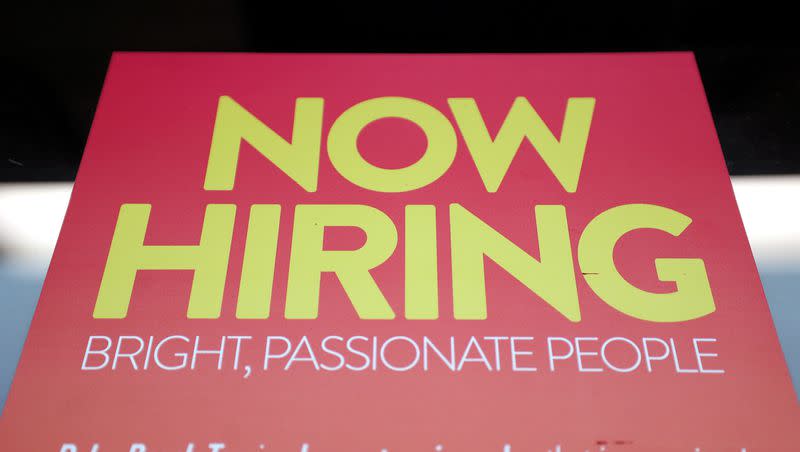Inflation drops sharply in March but core prices still up

Overall annual U.S. inflation came in at 5% in March according to the latest data from the Labor Department, down a full percentage point from February and the lowest year-over-year rate in almost two years.
But core inflation, a metric that strips out volatile food and energy costs and a data point closely watched by the Federal Reserve, saw a 0.4% increase from February and at 5.6% is now outstripping headline inflation for the first time since early 2021.
While the decrease in the annual rate will be seen as a positive sign by the Fed that its nine straight interest rate increases over the past year or so are having the intended effect of chilling down a streak of record and near-record price increases, inflation is still running well north of the monetary body’s 2% target rate.
Related
Fed threads the needle on inflation vs. banking volatility, bumps interest rate .25%
March jobs report hits ‘Goldilocks’ mark for Fed’s inflation fight
Utah leaders respond to Silicon Valley Bank meltdown as feds promise to cover depositors
Some regions of the U.S. saw inflation drop as low as 3.6% in March. But the Mountain West states, which include Utah, continue to hold down the unenviable top spot when it comes to price hikes on goods and services and saw a 6% annual rate last month.
The higher costs of shelter were a primary driver of month-over-month increases in March moving up 0.6% from February to March, according to the report, and are now 8.2% over the same time last year.
Overall food costs held steady in March but grocery prices inched down 0.3%, the first drop since September 2021.
Other recent economic data also reflects that an overheated U.S. economy is finally starting to chill.
The sizzling U.S. job market showed just the right amount of cooling off in March, with employers adding 236,000 new positions and unemployment ticking down to 3.5%, according to a report released last week by the Labor Department.
March gains stayed in the healthy zone but eased from the 326,000 jobs added in February and came in well below the 334,000 monthly average over the past six months.
March unemployment ticked down to 3.5% from February’s 3.6% but is still hovering close to January’s 3.4%, the lowest rate in over 50 years.
U.S. workers continued to see wage growth, but at a rate that shows some slowing from last year’s pace. Average hourly earnings were up 0.3% in March, pushing the hourly rate for private non-farm employees up 9 cents to $33.18 per hour. That rate is up 4.2% from the same time last year.
“Today’s report is a Goldilocks report,” Daniel Zhao, lead economist at Glassdoor, told The Associated Press. “It’s hard to find a way it could have been better. We do see that the job market is cooling, but it’s still resilient.’’
In another sign that might reassure the Fed’s inflation fighters, a substantial 480,000 Americans began looking for work in March, per AP. Typically, the bigger the supply of job seekers, the less pressure employers feel to raise wages. The result can be an easing of inflation pressures.
Interest rate adjustments are the primary tool wielded by the Fed in chasing its dual mandate of maintaining maximum employment and price stability. But its series of rate hikes over the last year were one of the factors hurting Silicon Valley Bank, which earlier this month became the second-biggest U.S. bank failure in history. Bonds owned by it and other banks have seen their prices fall as interest rates rose sharply.
Some economists predicted the monetary body could push a more aggressive 0.5% hike at its March meeting, in the face of economic data showing ongoing price increases and a red-hot labor market. But that was before upheaval spread throughout the banking industry earlier this month following the failures of first Silicon Valley Bank and, a few days later, Signature Bank.
During a press conference following the conclusion of its meeting late last month, Fed chairman Jerome Powell said the decision to move its rate up again was driven by January and February economic data reflecting persistent price increases and a labor market that continues to see job openings outpacing available workers by an almost 2-to-1 margin. Powell also noted that expected credit tightening in the banking sector “means that monetary policy may have less work to do” in cooling down consumer spending.
